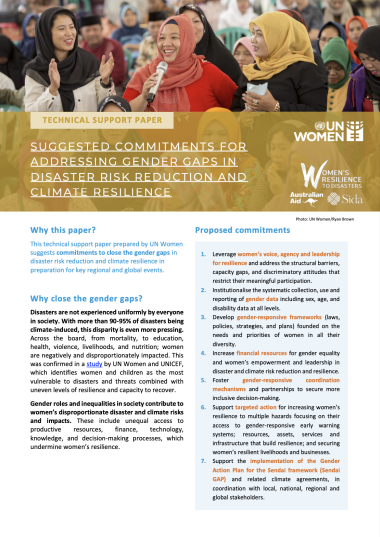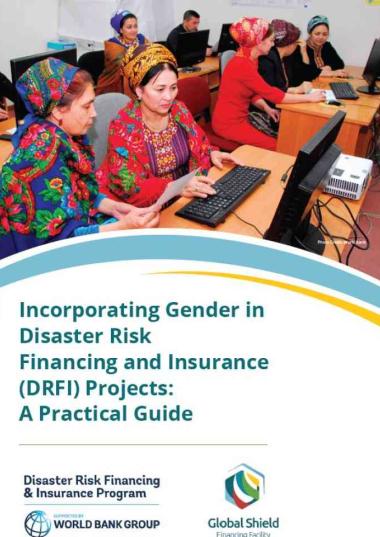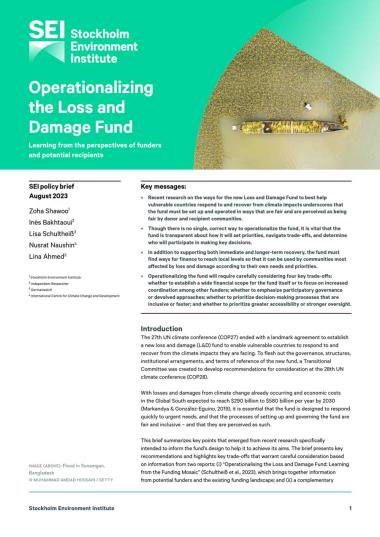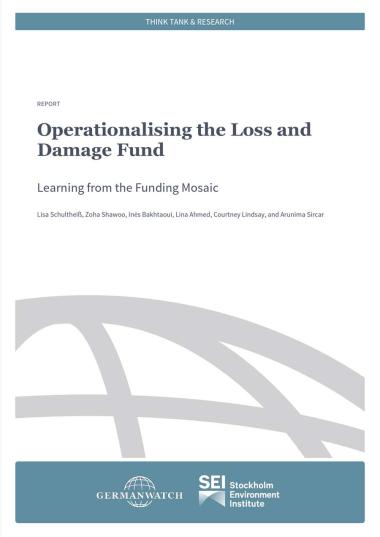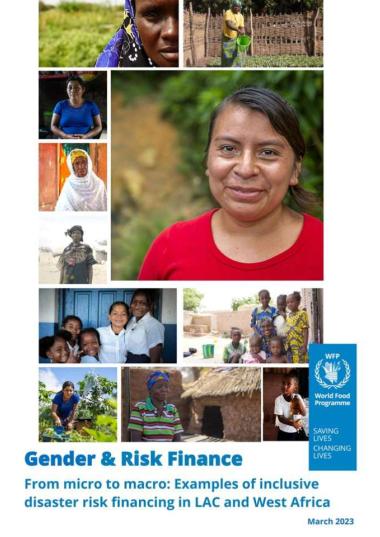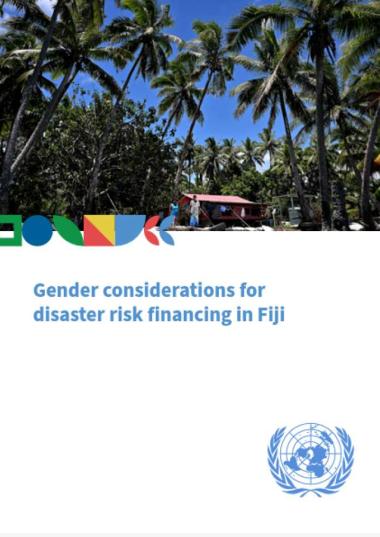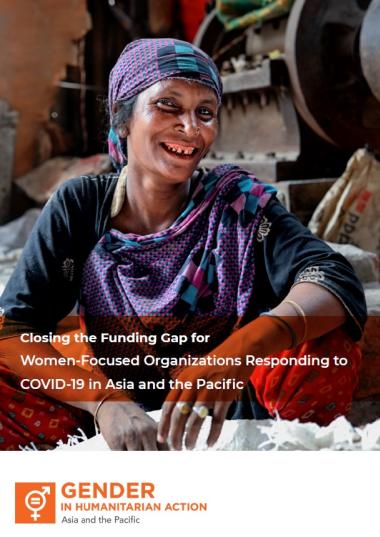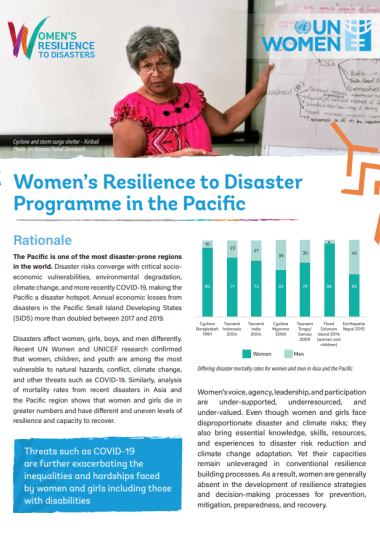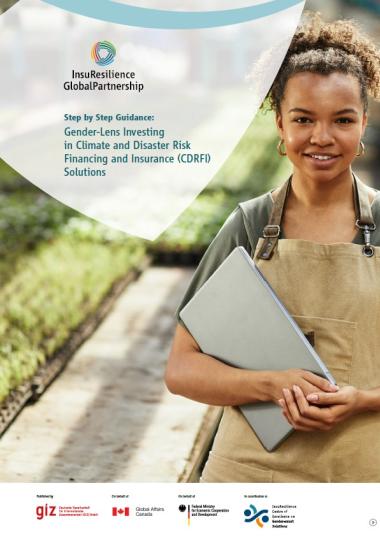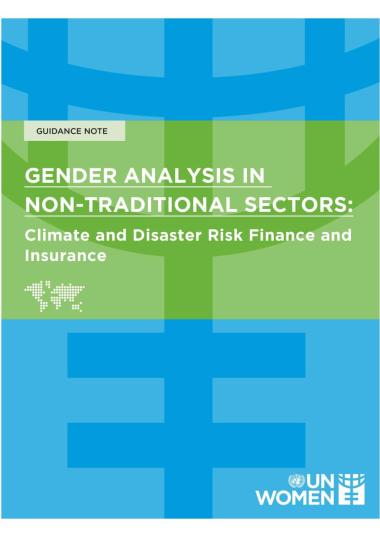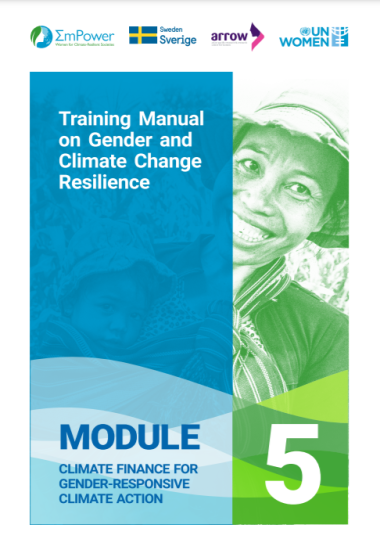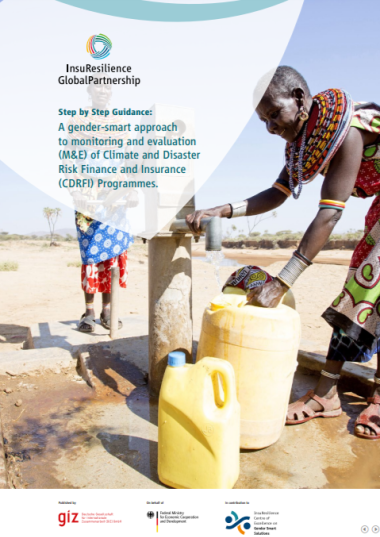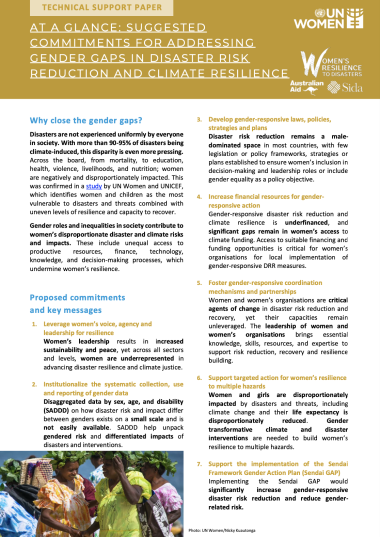
Access to finance
There is a significant gap in gender-responsive disaster risk financing and insurance that is accessible to women before, during, and after disasters.
Without gender analysis, insurance schemes may actually reinforce inequalities between women and men, and increase vulnerability, as well as potential losses, to those most exposed and most impacted by disasters and the adverse effects of climate change.
Gender-responsive risk sharing, risk transferring, and financial services can provide risk protection and help build resilience to multiple hazards for all. Gender may be integrated into insurance schemes in different ways depending on the approach, namely macro-, meso- and micro-level insurance. Similarly, governments can support gender-responsive policies and financial services by partnering with microfinance, microloan, and insurance institutions that can develop tailored financial services to help women restart livelihood activities.
Social safety nets (a form of short-term social protection) can protect individuals and households from falling back into long-term poverty because of the post-disaster or recurrent disaster losses they suffer. Examples include cash for work initiatives and financial products (e.g. cash/in-kind transfers, public works, incentives schemes). The latter create earning opportunities to help stabilise household incomes following a disaster. However, historically, cash for work initiatives and financial products have not been accessible to or fully inclusive of women, thereby perpetuating gender inequalities.
